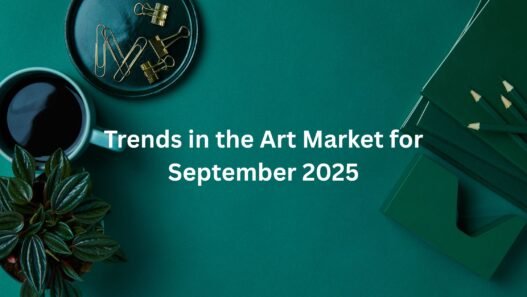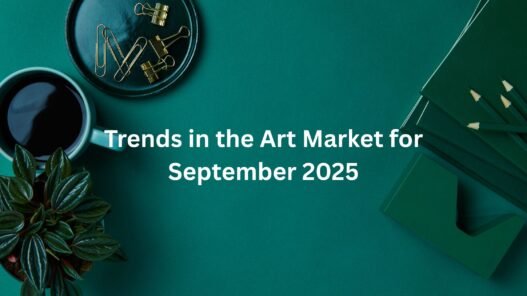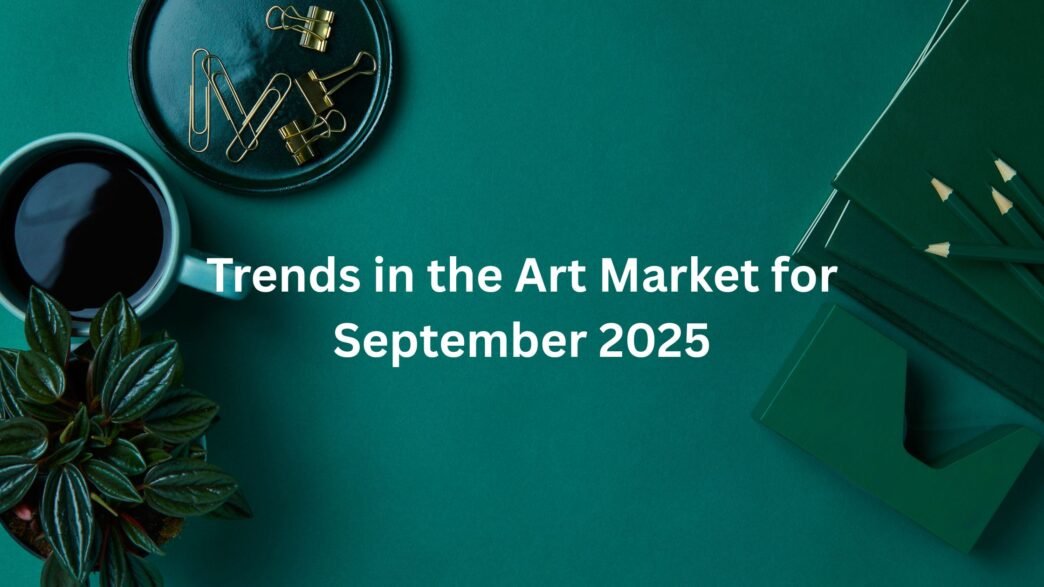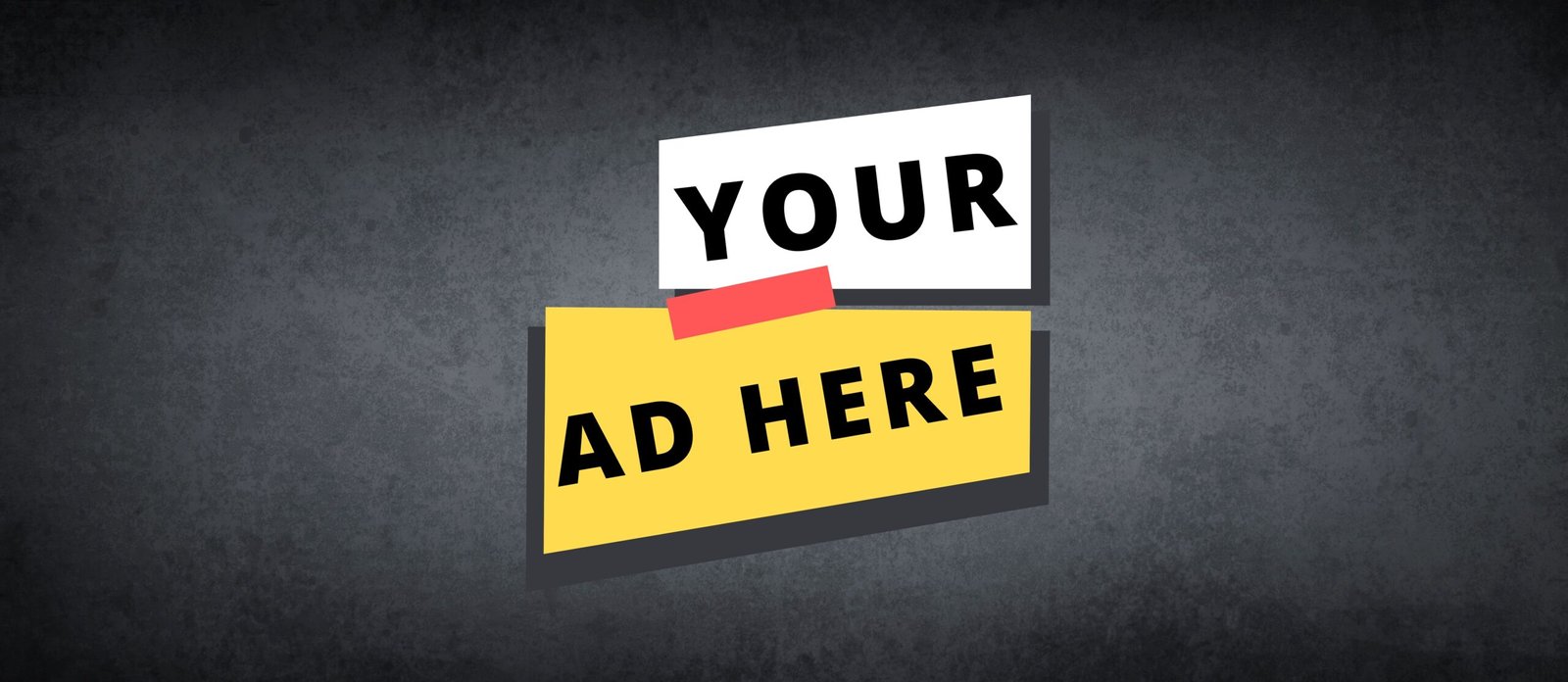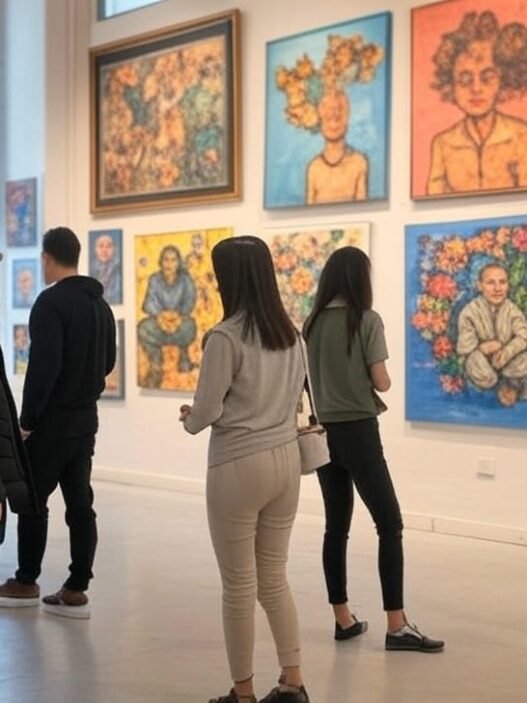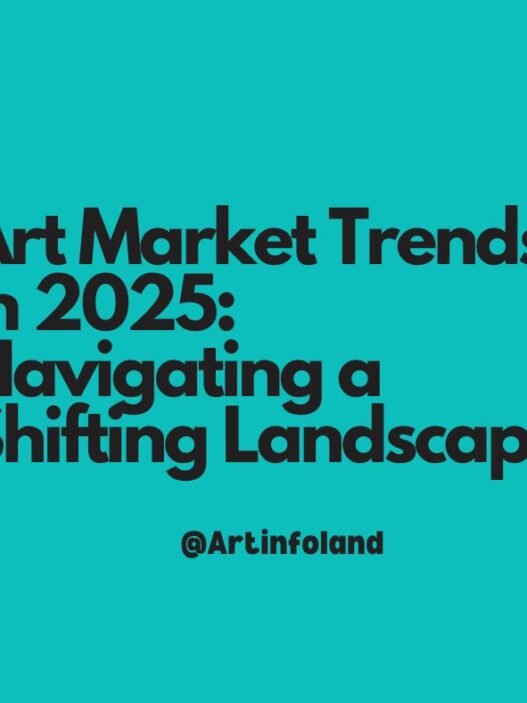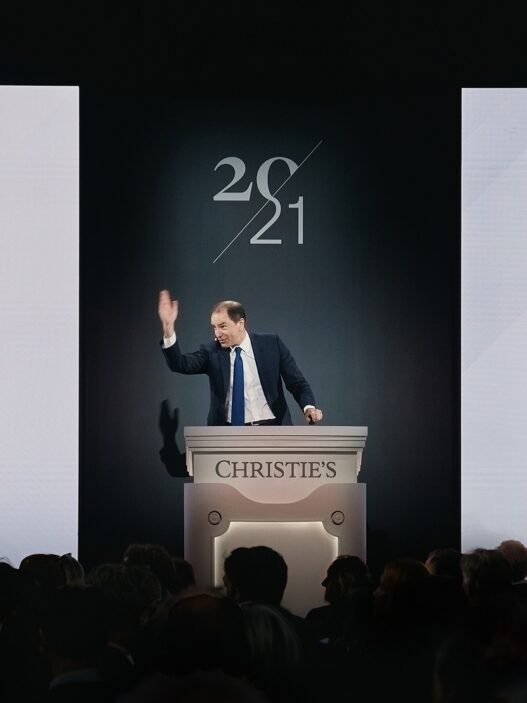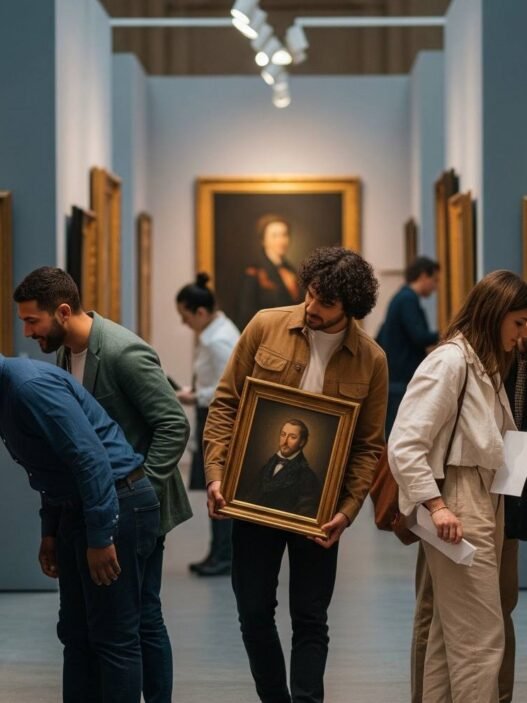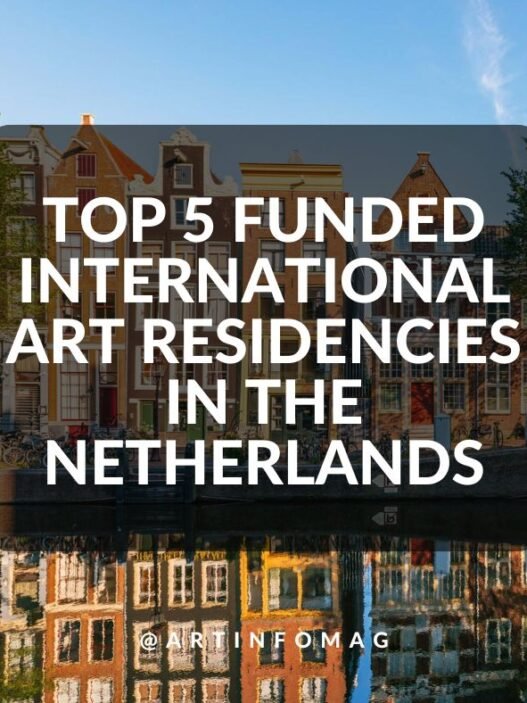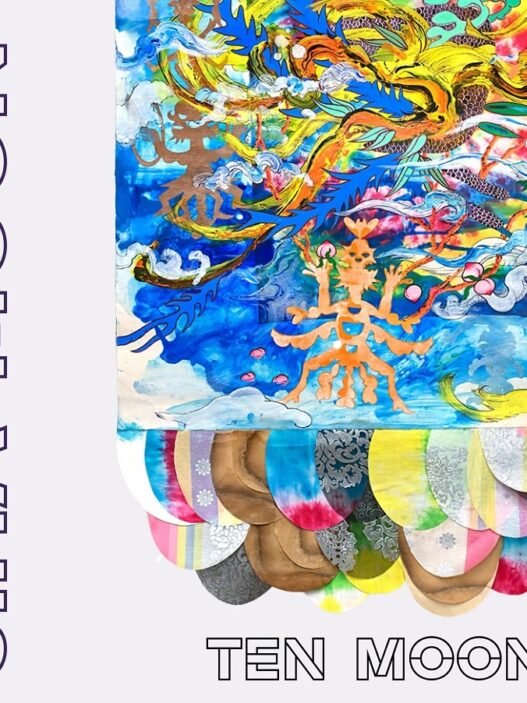As the global art market steps into the pivotal fall season of September 2025, it finds itself at a crossroads of cautious optimism and transformative shifts. Following a 12% contraction in 2024, with sales totaling $57.5 billion, the industry is showing signs of resilience, particularly in the mid-range and entry-level segments where younger collectors are driving demand for emerging artists and alternative collectibles like design and wine. Auction houses report a robust 13.8% rebound in $1M–$10M lots, bolstered by guarantees, while ethical debates—sparked by controversies like the Tasmania museum’s mishandling of human remains—underscore a broader push for responsible collecting. This month, as events like Design Miami Seoul and Art Basel Paris set the stage, the art world navigates economic headwinds with a renewed focus on accessibility, sustainability, and cultural accountability, setting the tone for a dynamic season ahead.
- Signs of Stabilization Amid Decline: While global art sales dropped 12% in 2024 to around $57.5 billion, mid-2025 data shows resilience in mid-range ($1M–$10M) and lower-end segments, with auction lots sold reaching near-decade highs, suggesting collectors are adapting to economic pressures rather than retreating entirely.
- Shift to Responsible and Selective Collecting: Evidence points to younger buyers (millennials and Gen Z) driving up to one-third of auction activity, focusing on emerging artists and undervalued works, while galleries emphasize online sales and ethical practices, reflecting a broader move away from speculation.
- High-End Revival on the Horizon: Recent auctions in September indicate momentum building for trophy lots, with strong sell-through rates and guarantees covering 73% of value, though overall sentiment remains cautious due to geopolitical and economic uncertainties.
- Growth in Alternative Categories: Non-fine art areas like design, jewelry, and wine surged 20–63% in H1 2025, attracting crossover collectors and highlighting diversification as a key strategy.
- Regional Shifts and Ethical Focus: Paris and emerging markets like the Middle East are gaining ground, while controversies over cultural repatriation underscore calls for decolonization, potentially influencing institutional policies worldwide.
These trends suggest a market in transition, with opportunities for thoughtful engagement despite challenges. Research indicates a pivot toward sustainability and accessibility, though high-end sales could rebound if fall auctions perform well.
Collector Behavior and Market Sentiment
Collectors appear more selective, with 30% reporting reduced purchases due to high prices and economic factors. Younger demographics are entering via lower-price points, supporting emerging artists when priced appropriately. Galleries are responding by boosting online presence (43% planning more focus) and collaborations to foster community.
Outlook for the Fall Season
As September unfolds, events like Design Miami Seoul and upcoming November auctions signal potential uplift. Experts lean toward measured optimism, with guarantees and private sales providing stability in a risk-averse environment
September 2025 marks the traditional ramp-up to the fall auction season, yet the art market enters this period with tempered expectations. Fine art sales at major houses like Christie’s, Sotheby’s, and Phillips totaled $4.72 billion in the first half of the year—a respectable figure on paper, but down 8.8% from H1 2024 and a stark 40.9% from the 2022 peak. The average price per lot has dipped 6.5%, hitting the lowest mid-year level in a decade, largely due to a slowdown in eight-figure “masterpiece” transactions that once buoyed headlines. This contraction isn’t uniform, however; research suggests a bifurcated recovery, with the sub-$10 million segment gaining traction as sophisticated collectors pivot from trophy hunting to value-driven acquisitions.
To illustrate, consider the following table summarizing key H1 2025 auction performance metrics across price brackets, sourced from aggregated data at the big three houses:
| Price Bracket | H1 2025 Sales Change (YoY) | Share of Total Lots Sold | Notable Shifts |
|---|---|---|---|
| Under $1M (Entry-Level) | +5.2% | 62% | Increased millennial/Gen Z bidding (up to 33% of total); fierce competition for breakout artists. |
| $1M–$10M (Mid-Range) | +13.8% | 28% | Strongest growth area; 45.5% of lots guaranteed, up 13% from 2024, signaling stabilized confidence. |
| Over $10M (High-End) | -22.4% | 10% | Slowdown in Old Masters (-24.4% initially, but rebounded overall); ultra-contemporary down 31.3%. |
| Non-Fine Art (e.g., Design, Wine) | +20–63% | 28% of overall sales | Jewelry/handbags up 30%; wine auctions surged 63%, attracting new crossover buyers. |
Data compiled from Christie’s, Sotheby’s, Phillips reports via Artnet and Bank of America analyses.
This table underscores a key trend: the democratization of access. Younger demographics, now comprising one-third of bidders at major sales, are channeling smaller budgets into prints, design, and emerging artists, fostering resilience in the $1M–$10M tier. Globally, 30% of collectors report being more selective, prioritizing “responsible” engagement—such as direct purchases from studios or support for community-driven spaces—over secondary-market speculation. Galleries echo this, with 43% ramping up online sales amid rising overheads, while larger players grapple with “burnout” from overexpansion.
Emerging markets add another layer of complexity. Asia, particularly via events like Design Miami Seoul (launched this September), is reshaping dynamics, with technology and evolving preferences for digital-native works projected to drive a 5–10% uptick in print sales for the year. In the U.S., the market is “rethinking its future,” as evidenced by initiatives like the Upstate Art Weekend’s record 2025 edition, which drew crowds to non-hub regions and highlighted sustainable models. Private sales, up 14% in 2024 and continuing strong, further buffer the dip, with art loans growing 14% YoY as collectors leverage collections for liquidity.
Looking ahead, November’s marquee weeks could test this equilibrium. Predictions lean toward higher sell-through rates (bolstered by guarantees) but measured bidding, with non-art categories like whiskey and sneakers potentially outpacing fine art. Industry voices, from retired dealer Jack Hanley to Guggenheim CEO Mariët Westermann, urge a cultural shift: emphasizing art’s nonfinancial value—education, community, and ethics—over pure commerce for long-term viability. In September’s quieter pre-fall rhythm, these undercurrents feel palpable, as fairs like Untitled Art Houston (September 19–21) spotlight accessible, innovative works amid the gloom.
The Tasmania Museum Controversy: A Seismic Ethical Reckoning
Amid this market introspection, the art world’s attention has snapped to Tasmania, where a September 11, 2025, coroner’s report exposed the University of Tasmania’s Plomley Collection—a trove of 177 human specimens, including body parts and remains—as having been collected, stored, and in some cases publicly displayed for decades without the knowledge or consent of affected families. This revelation, detailed in an exhaustive inquiry, traces practices back to the 19th century but highlights lapses persisting into the 20th, often involving Indigenous Tasmanian Aboriginal ancestors whose remains were treated as “specimens” in anthropological exhibits.
The controversy erupted when the report, led by Coroner Simon Cooper, confirmed that specimens—ranging from fetal remains to adult bones—were acquired through questionable means, including unconsented autopsies and grave desecrations, and displayed in museum settings without ethical oversight. Critics, including Indigenous leaders and human rights advocates, decried it as a “profound betrayal,” amplifying calls for immediate repatriation and tying it to Australia’s broader “stolen generations” trauma. The university issued a formal apology on September 12, committing to return remains and overhaul collection policies, but skeptics argue this falls short, demanding independent audits and compensation.
What elevates this from scandal to watershed? It intersects with global movements, echoing the British Museum’s Parthenon Marbles dispute or U.S. institutions’ NAGPRA compliance struggles, where over 100,000 Indigenous items await repatriation. In Tasmania’s context—home to the world’s southernmost Indigenous people, the palawa—the exhibit history underscores colonial erasure, with past displays framing Aboriginal culture as extinct “curiosities.” The timing, coinciding with fall’s museum-heavy calendar (e.g., the Met’s “Witnessing Humanity” opening September 20), amplifies its ripple effects, potentially pressuring venues like the Smithsonian (fresh off its own race-themed controversies) to accelerate reforms.
Social media buzz on X underscores the divide: Posts from Indigenous activists decry “grave robbing in plain sight,” while defenders frame it as a “teaching moment” for historical context—though the former dominates, with hashtags like #RepatriateTasmania trending locally. (Note: Broader X chatter on controversial art this month also nods to activist shows like “UPRISE 2025: The Art of Resistance,” but none match Tasmania’s immediacy and stakes.) For the art market, this could indirectly boost demand for ethically sourced works, aligning with the “responsible collecting” ethos gaining traction.
In sum, September 2025 encapsulates the art ecosystem’s dual pulse: a market hunkering down for resilience, and institutions confronting uncomfortable truths. As auctions loom and repatriation dialogues intensify, the coming months may well redefine not just what’s bought and sold, but what’s displayed and honored.


